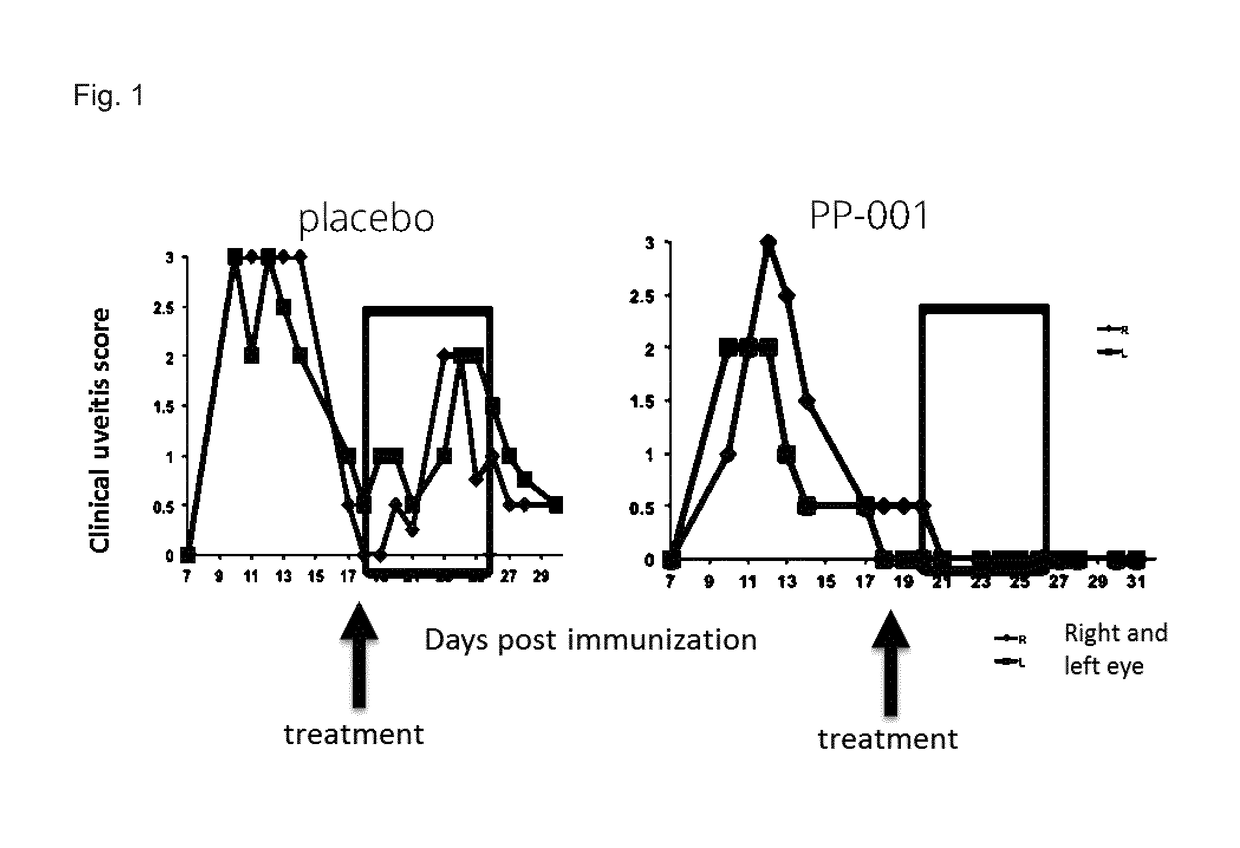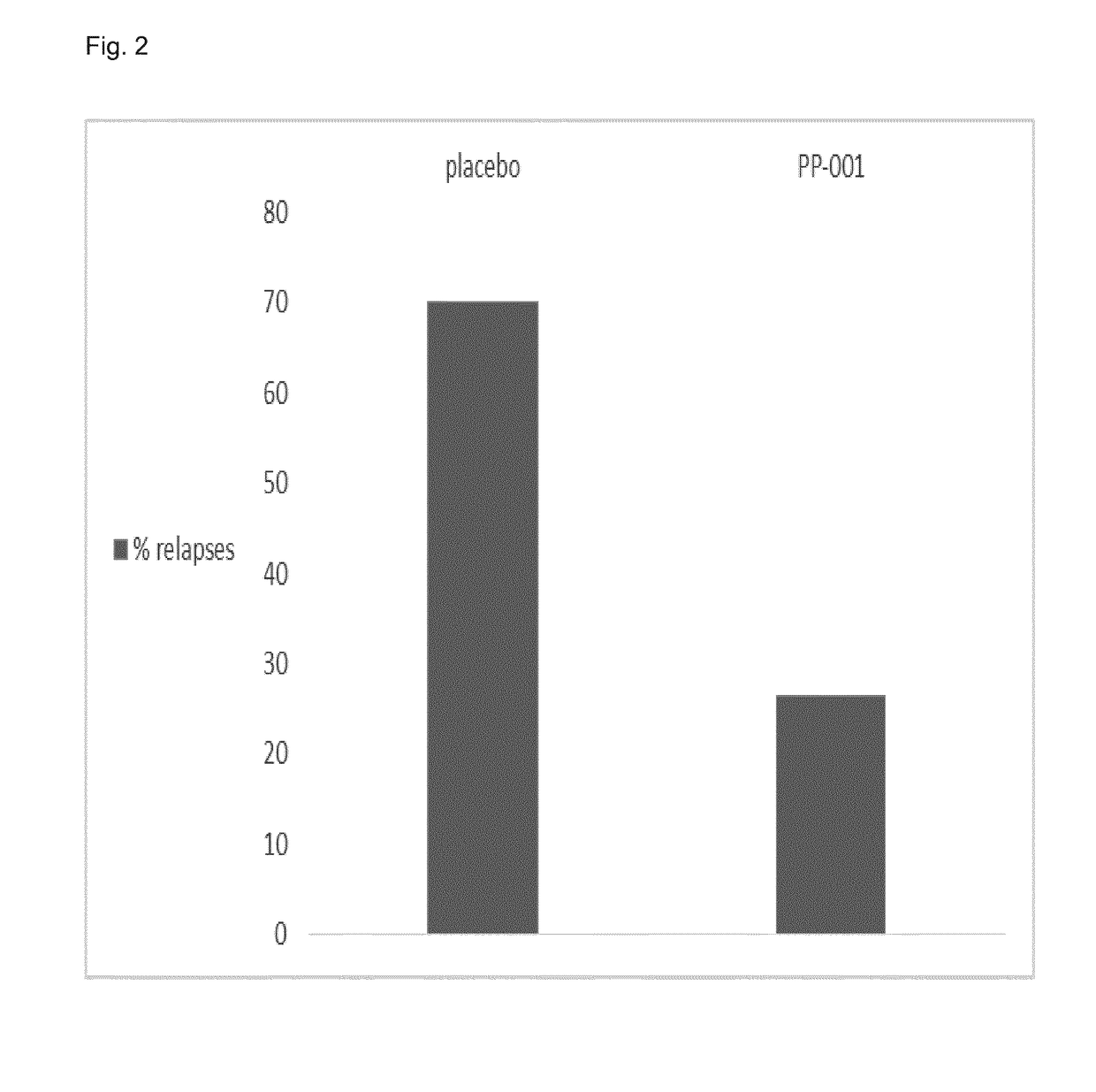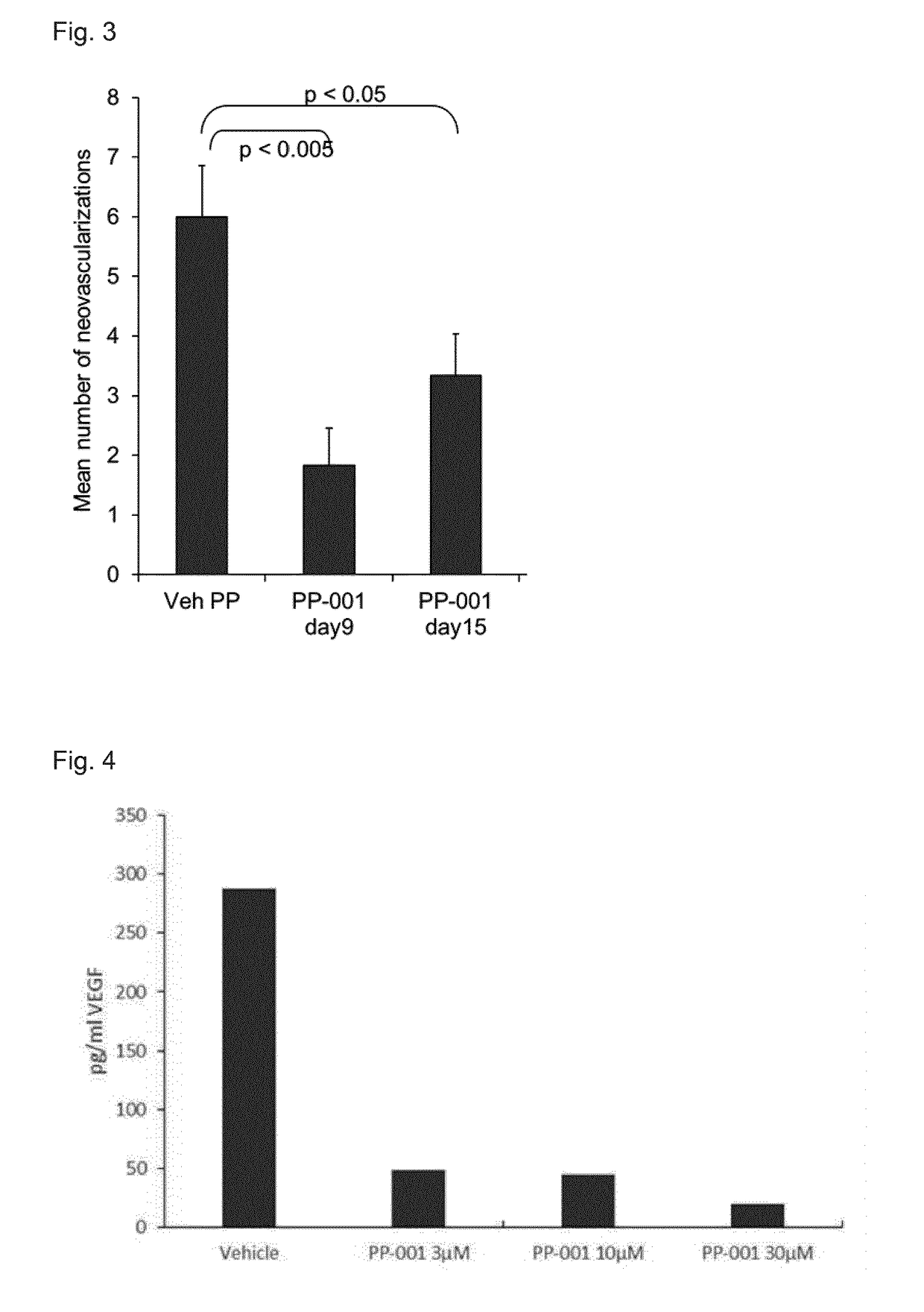Compounds for treating ophthalmic diseases and disorders
a technology of compound and ophthalmic disease, which is applied in the field of ocular therapeutics, can solve the problems of affecting the quality of life of millions, no treatment is currently available, damage to the various structures of the ocular surface, etc., and achieves the effect of high efficacy and well tolerated treatment of eye diseases
- Summary
- Abstract
- Description
- Claims
- Application Information
AI Technical Summary
Benefits of technology
Problems solved by technology
Method used
Image
Examples
example 1
Local Tolerability of Intravitreal Injections of PP-001
[0124]Intraocular (=local) application of drugs for uveitis is a desirable way of treatment to avoid systemic treatment, which is often burdened with severe side effects.
[0125]For this purpose, three different doses of PP-001, dissolved in phosphate-buffered saline (PBS) and a vehicle control with PBS only were injected into the posterior chamber (=vitreous) of rat eyes. The eyes (anterior chamber) were examined daily with an ophthalmoscope and after 8 days the experiment was terminated, and the eyes processed for histology (cryosections).
[0126]8 Lewis rats (age 7-8 weeks) were anesthetized using 0.5 mg / kg medetomidine s.c. Additional topical anesthesia with 0.4% oxybuprocaine eye drops was applied. After intraocular injection sedation was antagonized with an s.c. injection of 2.5 mg / kg atipamezol.
[0127]10 μl of solution were injected into the vitreous of both eyes with a 30 G needle, controlled under an operation microscope. Th...
example 2
Prevention of Relapses in the Experimental Autoimmune Uveitis Rat Model by Intravitreal Injection of PP-001
[0134]Experimental autoimmune uveitis (EAU) in Lewis rats is a model for human endogenous uveitis. The disease is mediated by CD4+ T lymphocytes of the T helper 1 (Th1) and Th17 subtypes. In Lewis rats the disease was induced by immunizing animals with retinal antigens such as interphotoreceptor retiniod-binding protein (IRBP) and adjuvant. IRBP is also considered to be an autoantigen in humans.
[0135]Peptide R14, a 23mer from IRBP, is the most pathogenic epitope for Lewis rats. Immunization with these peptides emulsified in Complete Freund's Adjuvant (CFA) leads to severe inflammation of the anterior chamber of the eyes and destruction of the retinal architecture.
[0136]R14 causes a relapsing-remitting disease with an early onset (about day 7), the peak of EAU between day 10 to 14 and the remission around day 17 / 18.
[0137]20 rats were immunized with 15 μg IRBP-peptide R14 emulsif...
example 3
Inhibition of Choroidal Neovascularization
[0141]Choroidal neovascularization is a known feature of posterior uveitis and a major cause of retinal destruction and loss of vision. To monitor the effect of PP-001 on neovascularization, the EAU model in Lewis rats was used.
[0142]In Lewis rats the disease was induced by immunizing animals with retinal antigen PDSAg, a 14mer derived from S—Ag. Immunization with that peptide emulsified in Complete Freund's Adjuvant (CFA) leads to severe inflammation of the anterior chamber of the eyes and destruction of the retinal architecture and choroidal neovascularization
[0143]Induction with PDSAg causes a monophasic disease with first clinical signs of inflammation observed between day 8 and 12 after immunization and reaching the peak of disease between day 14 and 18. Inflammation in the anterior chamber subsides until day 21 to 22 post immunization. Long term effects such as choroidal neovascularization are seen at the later stages of the disease af...
PUM
| Property | Measurement | Unit |
|---|---|---|
| time | aaaaa | aaaaa |
| concentration | aaaaa | aaaaa |
| pH | aaaaa | aaaaa |
Abstract
Description
Claims
Application Information
 Login to View More
Login to View More - R&D
- Intellectual Property
- Life Sciences
- Materials
- Tech Scout
- Unparalleled Data Quality
- Higher Quality Content
- 60% Fewer Hallucinations
Browse by: Latest US Patents, China's latest patents, Technical Efficacy Thesaurus, Application Domain, Technology Topic, Popular Technical Reports.
© 2025 PatSnap. All rights reserved.Legal|Privacy policy|Modern Slavery Act Transparency Statement|Sitemap|About US| Contact US: help@patsnap.com



